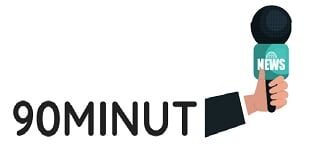
Laikas group was likewise considering tempering the software applications objective for quality. They desired a service that may separate the lines an artist would want to clean up while protecting the flaws produced by human hands, which consist of reliability. So, when it worried expert system, the organization wanted to ensure its animators got most current thing.
” The maker would take a fracture at it,” specifies Emerson. “It d provide you back your tracking information, your rotoshapes. Nevertheless then, at the exact very same time, there was an opportunity there for an artist to analyze what had really been done and have the tools to return in and improve that in whatever technique she or he required to.”.
Laika went the Xeon path for its really first endeavor into synthetic intelligence partly because Intels processors were presently powering the studios workstations and render farm. “If the utilized maker learning group at Intel was going to develop something, we understood they would have the capability to improve it for those CPUs,” specifies Stringer. And since the toolset is developed utilizing oneAPI parts, its code will not need to be reworded to support future architectures.
The marital relationship of art and innovation cultivates a roadmap for development.
Thanks to advances in 3D printing and synthetic intelligence, Laikas artists are developing more emotive characters that appear like action figures come to life. The studio continues developing a century-old craft totell stories in methods that wouldnt have been possible in years past Possibly thats why all 5 of its films were Academy Award candidates for Finest Animated Function.
Above: A future with complete character rotomation would make it possible for Laikas animators to work better by preventing many direct exposures for scenes with digital characters in the background.
Progressing, Emerson wishes to consist of larger environments and larger crowds into Laikas jobs. When once again, there are technical restraints to conquer. “You would never ever see huge crowds in stop-motion films prior to Laika given that there just isnt the capability to establish that great deals of puppets. So, if youre going to establish a substantial crowd of characters, unless youre going to head out and develop a thousand puppets to return there, youre going to need to impart some digital development.”.
Laika presently has experience consisting of digital bonus offer using mattes, alpha channels, and rotoscoping. This mix of effects, that includes numerous direct exposures to get a crowd included behind the puppet, is, when again, time consuming and expensive.
” What would be extraordinary with this is if we might do total character rotomation, to separate characters from animation plates without requiring to put green screens behind them. And what that would allow us to do would be to prevent that 2nd direct exposure. And after that stop movement animators would not require to stop to put the green screen in. They might merely keep advancing with the effectiveness, given that a lot of what they are doing is whatever about rhythm.”.
Development plays a supporting function to Laikas art. Theres presently lots of tech associated with Laikas latest functions. Fortunately, software application tools established using a merged shows model make it basic to support whatever hardware Laika requires to speed up the future of stop-motion animation.
Go Deeper: Laika Studios & & Intel Join Forces to Expand Whats Possible in Stop Motion Filmmaking
.
Laika partnered with Intel to establish software application tools able to conserve time and keep its animators concentrated on their craft.
These artifacts are intrinsic in the approach Laika establishes its characters, so the AI needs to be trained to recognize the upseting lines, trace them through a procedure called rotoscoping, and track them. What we do here at Laika is we take puppets– completely articulated puppets– and we establish tiny sets to put those puppets within, with real-world light, and we capture them one frame at a time. “You would never ever see substantial crowds in stop-motion films prior to Laika because there merely isnt the ability to establish that lots of puppets. Fortunately, software application tools developed making use of an unified programs design make it easy to support whatever hardware Laika needs to speed up the future of stop-motion animation.
This brief article comes from the Innovation Insight series, allowed with financing from Intel.
Laika, the stop-motion animation studio best understood for its function movies Coraline, ParaNorman, The Boxtrolls, Kubo and the 2 Strings, and Missing Out On Link, records and customizes 10s of countless frames for each of its movement pictures. Laika partnered with Intel to develop software application tools able to save time and keep its animators concentrated on their craft.
The studio is training neural networks to assist and identify repair lines and other artifacts on the faces of its puppets throughout post-production. These artifacts are intrinsic in the approach Laika establishes its characters, so the AI requires to be trained to recognize the upseting lines, trace them through a treatment called rotoscoping, and track them. At the specific same time, Laika wants to protect the particular defects of its handmade art work, leaving artists in charge of what goes and what stays.
You will take pleasure in the item of Laikas efforts in the studios next movie if all goes according to strategy.
Bottom line
Developing a contemporary stop-motion function motion picture is more complicated than ever; Laikas newest job, Missing Out On Link, included more than 106,000 numerous 3D-printed faces.
Cleaning up unwanted lines is presently a handbook and recurring treatment, making it a perfect target for synthetic intelligence.
Laika teamed with Intel to establish tools based upon the oneAPI programs style. These take benefit of the studios existing Xeon CPU-based facilities to accelerate digital paint and rotoscoping tasks.
A conventional film-making approach satisfies contemporary innovation
In stop-motion animation, items are photographed, moved a little, and photographed when again, over and over. Scanning the still images rapidly enough produces the impression of movement. Its a technique with origins in the 19th century.
Much of us were selected stop-motion art jobs as early as primary school. If we examined those amateur efforts today, we d definitely see some rather serious technical defects, such as joints in the clay we utilized to form our puppets and placing problems with our electronic video cameras. Plus, theres simply a lot innovative expression to extract from products lying around your home.
Expert stop-motion animators need to conquer those specific very same troubles, while taking storytelling and artistry to the next level. In a recent webinar, Steve Emerson, Laikas visual impacts manager, stepped through the studios labor-intensive treatment.
Above: Stop-motion animation is severe work. What we do here at Laika is we take puppets– entirely articulated puppets– and we develop mini sets to put those puppets within, with real-world light, and we catch them one frame at a time. For every single frame throughout one second of motion picture, we posture a puppet, we take a direct exposure, we move the puppet or something else within that environment in the smallest of increments, and we take another direct exposure.
The mathematics is nearly aggravating. Laikas newest job, Missing Out On Link, had a runtime of 93 minutes. With 24 frames in a 2nd, that suggests the studios animators required to fastidiously collect practically 134,000 frames. According to Emerson, each animator can capture someplace in between 3 and a half or 4 seconds weekly. “It is a prolonged, severe, outrageous treatment sometimes, that is swarming with problems. Normally those problems are fixed in post-production.”
Establishing a more enticing stop-motion experience
Laikas jobs be successful in part since they press the borders of what audiences get out of stop-motion animation. … we get here using development,” mentions Laikas Emerson.
Prior to puppets ever make it to the set, Laikas facial animation group makes use of software application to determine how a shot is going to look, and after that 3D prints the faces ahead of time. For Missing Out On Link, Laika produced 106,000 different faces made up of overlapping textured parts, such as skin, eyebrows, tongues, and teeth. Each face was divided through the center, providing animators a possibility to snap in functions on a per-frame basis and accomplish a wider range of expressions making use of less facial parts.
Above: More than 2,000 character performances that required cosmetic deal with rotoscoping and scene removal. Image Credit: Laika
Picture youre painting a space. Prior to beginning on the walls, you tape off the ceiling and floorboards to secure them. The action includes substantial time to the procedure, its needed for a neat last item. The exact same selects rotoscoping. And as 3D printing development advances, making it possible for Laika to establish a lot more shapes for progressively nuanced effectiveness, rotoscoping them all gets back at harder.
Making use of AI for rotoscoping (without affecting the art).
Laikas choice to clean the lines on its puppets faces wasnt made gently. The group understood it d be a lot of work to eliminate the artifacts in every frame of the film. Eventually, nevertheless, developing a more effective mental connection with more realistic-looking characters took precedence.
To help speed up the procedure of rotoscoping a growing library of face shapes, the group started checking out artificial intelligence services making use of Xeon CPUs with the hope of a 50% time expense savings. Along the method, it made a variety of observations that ran counter to typical tenets about AI.
The used maker discovering out group at Intel helped Laika discover out that feeding its neural network terrific offers of standard training information about puppets wasnt as useful as establishing a toolset particular to a handful of characters.
” It ended up that, when you focus in on this specific task of establishing a rotoshape, which is an area you wish to mask or track, from tracking points on the face, an outstanding 5 or 6 shots of appropriately created ground truth details sufficed to train the system,” specifies Jeff Stringer, director of production development at Laika.






